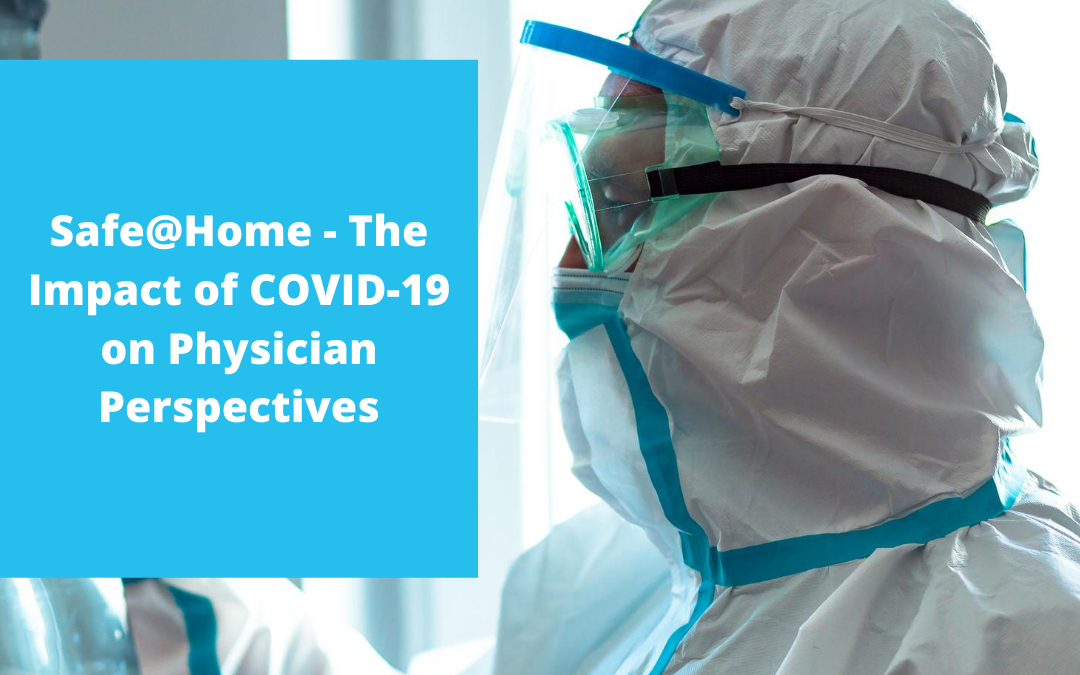The COVID-19 pandemic has affected the healthcare sector in every aspect; from expediting the adoption of telehealth services to transforming the workspace at home, there are no areas left unscathed by the battle against the virus. The COVID 19 pandemic has enabled people to be safe at home, while resuming their professional lives, without any obstacles.
However, the virus largely affects the everyday work lives of doctors, especially the way medical practitioners and other clinicians are governing and regulating the delivery of healthcare through telehealth platforms and remote patient monitoring. As the digital age advances, clinicians can give actionable guidance and insight on how both patients and providers can garner the numerous technological services to deliver better care, comfort, and support during this burdensome time.
Advantages and Uses of RPM Healthcare
Telehealth services, especially remote patient monitoring can improve public health alleviation policies during this pandemic by boosting social distancing. These services can be a secure choice for patients by reducing probable contagious exposures while ensuring that their families are also safe at home. Also, this reduces the stress on healthcare institutions by decreasing the eruption of patient demand on in-person hospital services and the usage of personal protective equipment (PPE) by healthcare personnel.
Sustaining continuum care to a considerable extent can circumvent supplementary negative outcomes from postponed precautionary, chronic, or daily care. Remote patient access to healthcare assistance may improve participation for individuals who encounter medical or social vulnerabilities or do not have immediate access to medical care providers. Moreover, through remote patient monitoring, the patient-practitioner relationship is guarded during incidences when a physical hospital checkup visit is not reasonable or likely, and patients are confident and assured that they can rely on these medical practices in a pandemic. Thus, their physical safety and mental well-being are also guaranteed. Physician perspectives have also molded and advanced in a virtual world. Healthcare workers in rural areas have also adapted to recent medical devices and developments to assist and support their patients.
According to the Centers for Disease Control and Prevention (CDC), via telehealth services:
- Low-risk critical care can be delivered for non-COVID-19 circumstances and for those people who may need extra medical assessments or assistance,
- Primary caregivers and medical professionals should be accessible for online consultations for physical, mental and behavioral conditions, and persistent health conditions and pain and therapy management,
- Health Education and Awareness can be provided for regulating chronic health ailments, including weight control and nutritional advice,
- Patients can engage in physical treatment, professional therapy, and other activities as a varied system compared to in-person support for optimal well-being,
- Vital signs of chronic medical circumstances (e.g. temperature checks, blood pressure, blood glucose, oxygen levels, and other remote assessments) can be monitored and regulated, such as through RPM tools,
- Clinicians should employ case management techniques for older adults and patients in rural settings who face hardships in accessing healthcare, with follow up checks with patients after readmissions in hospitals,
- Progressive care planning and advice should be given to patients and caretakers to record preferences if a life-threatening accident or a medical dilemma emerges,
- Clinicians should communicate with reimbursement providers to understand the availability of telemedicine, or medical guidance services that are compensated,
- Moreover, to guarantee that everyone is safe at home from any illness or virus, tele-triage techniques should be employed to evaluate and support all patients to reduce the number of individuals wanting care in healthcare institutions, particularly during periods of elevated transmission of infectious and widespread diseases such as COVID-19,
- Outreach remote programs should be accessible and available to patients with restricted technological services and connectivity and deliver a flexible and creative approach in platforms that can be employed for video check-ups, or audio conferences.
Alterations in Physicians perspectives
Amidst the pandemic, medical practitioners and clinicians have had to alter their lives. According to the Cureus Journal of Medical Science, a study was conducted on how COVID-19 has influenced Emergency Medicine and the Empowerment of Physicians to Mold Views on the Current Public Health Crisis. COVID-19 has ignited an unprecedented public response in the United States. They found that Emergency Medicine (EM) providers have an indispensable role that is paid for as a consequence of the public health conditions. By adopting the special forum of immediate patient coordination of healthcare, EM providers can correct common and popular misunderstandings and encourage more suitable social distancing operations for the larger community.
When an educational forum for any patient in the emergency section is continuously followed by healthcare providers, a reduction in society’s overpowering and burdensome apprehensions can be alleviated. While long-term exploration for vaccinations and preventive regulations persist to expand and improve, this instantaneous call-to-action enables EM physicians to go beyond their ordinary capacity of care to knowingly dispute the misinformation that results in unnecessary public concerns. It is the Emergency Medicine physicians who can handle the expected consequences of the unavoidable rise in transmission, cases, casualties in the United States. This very alteration in the perspectives and actions of medical practitioners has allowed patients to be safe through remote patient monitoring at home.
According to the World Health Organisation (WHO), Private and Specialized Assistance Suggestions were proposed for medical practitioners:
- To ensure that healthcare workers provide good quality care in the pandemic, their living circumstances and infrastructure (sanitation, electricity, telecommunications network, educational institutes, etc.) must be enhanced, especially in rural areas, where RPM tools and knowledge is not readily available.
- In healthcare centers, a promising, comfortable, and safe working environment should be present, with suitable appliances and equipment, supportive and validating management, and mentoring, especially in the pandemic.
- Acquire public commendation measures such as health worker days, honors, and titles at local, federal, and global levels to hoist the flag of hospital personnel. When the staff is motivated to deliver high-quality care, patients can rely on their remote patient monitoring tools and their providers.
As we persist with our global fight against the COVID-19 crisis, all healthcare factions are joining hands to protect everyone from the virus, and their physical and mental struggles. While technology and RPM Healthcare has become our backbone in society, our real heroes are the healthcare workers.

Kelton High is a Social Sciences undergraduate who majored in International Relations, with a budding interest in qualitative research. He has previously worked at Transparency International.

